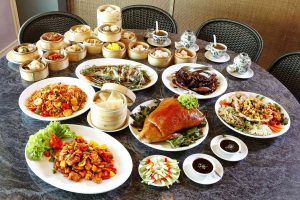
Long before the West was even an idea, the differences between Chinese and Western eating took root.
Food culture is a big deal in many societies. Believe it or not, it’s plausible that food culture is a contributing factor to the rise of civilizations. Now then, Chinese civilization has been around for thousands of years longer than what we think of as the Western civilization. Long before the West was even an idea, the differences between Chinese and Western eating took root. We’ll investigate those differences in this week’s blog.
Chinese and Western Eating Feature These Major Differences
- Communal Eating: You might have heard the term “family style”. While it is a common feature of both Chinese and Western eating for families to gather around the table, the Chinese believe in communal eating. What this means is that the Chinese shares dishes with their dining companions and the portions are sized accordingly. While everyone has their own bowl of rice or noodles, sharing the actual dishes is encouraged. In the West, individual portions of a dish are more the norm.
- Smaller Pieces: The Chinese also favor chopping their food down into much smaller pieces. The smaller pieces are easier to pick up with chopsticks and spoons since the Chinese typically don’t use forks and knives. While forks and knives are often offered at Chinese restaurants in the West, these are an accommodation for guests who may not be accustomed to using chopsticks.
- Various Ingredients: Various different ingredients are also used. These ingredients might be seen as exotic to Western tastes, but in China, they are as common as potatoes and cheese: winter melons, yams, lotus pods, frogs, plus feet, tongues, ears, and assorted internal organs.
- Table Shapes: While in the West, square tables are favored, the Chinese prefer rounder tables. Rounder tables are easier for family gatherings, which are especially centered around the lazy susan. The main reason for this is that roundness represents unity in Chinese culture, and unity is always good to have at meal times.
- Cooking Styles: One last major difference to note is cooking styles. Throughout the West, the most common cooking styles are boiling, frying, roasting, and baking. While the Chinese also employ these styles, they include steaming, stewing, and sauteing. Stir-fry or quick frying using a wok is also common. While butter, sunflower oil, and olive oil are commonly used for frying in the West, in China it is more common to use animal or peanut oil instead.
Get All Your Asian Groceries at Lotte Plaza Market
Lotte Plaza Market is your one-stop shop for all of your Korean and Asian grocery needs. With more than 10 locations in Maryland and Virginia, this growing market is always expanding and opening new markets to better serve our customers. Opened since 1976, our goal has always been to provide the best customer service and groceries to our customers. For answers to all of your questions, email us at LottePlaza.com.
